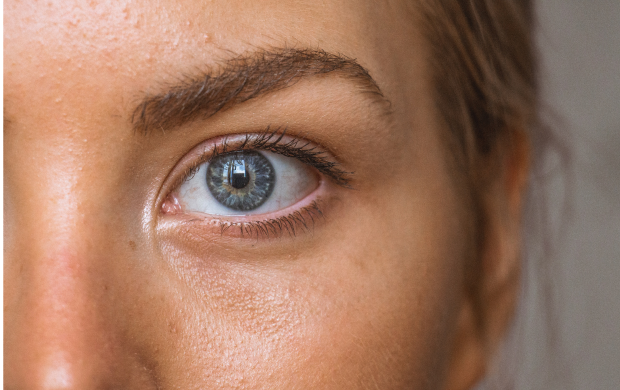Have you ever experienced a sudden bump on your eyelid that won’t go away? It can be annoying, painful, and disrupt your daily routines.
If this sounds relatable, you might be experiencing a chalazion cyst. In this article, you’ll find out:
- what chalazion cysts are
- their causes and symptoms
- treatment options
- prevention tips
If you’re looking for chalazion removal in London, keep reading to find out more about this condition.
What is a Chalazion Cyst?
A chalazion cyst is a benign, non-contagious bump that appears on the eyelids due to the blockage of the meibomian glands.
These glands produce oil that lubricates the eyes. When they are blocked, they cause the oil to build up and form a cyst.
Chalazion cysts are not styes, although people often mistake them for one. Styes are usually caused by a bacterial infection.
Chalazion cysts typically grow on the upper eyelid, but they can also develop on the lower eyelid.
Common Causes of Chalazion
While the risk of developing a chalazion can be heightened by specific factors, this condition can affect anyone. Some of the common causes of chalazion include:
Blockage of the Meibomian Glands
The most common cause of a chalazion cyst is the blockage of the meibomian glands. When the glands get clogged, the oil accumulates, causing a lump.
The blockage of the meibomian glands can occur due to various reasons, such as:
- allergies
- chronic eye infections
- use of certain medications
- ageing
Bacterial Infections
Bacterial infections and underlying skin conditions such as rosacea can also lead to the development of chalazion cysts.
Bacterial infections can occur when harmful bacteria come in contact with your eyes through contaminated contact lenses or dirty hands.
Once the bacteria enter the oil glands in the eyelids, they cause inflammation and clogging, leading to the formation of chalazion cysts.
Poor Hygiene
Poor hygiene leads to inflammation and clogging of the oil glands, leading to the formation of chalazion cysts.
If you’re not maintaining good hygiene practices such as washing the face and eyes regularly or using dirty makeup tools, you’re putting yourself at risk.
Chronic Blepharitis
Chronic blepharitis can also cause clogging of the oil glands.
Blepharitis is a common condition characterised by inflammation of the eyelids. In some cases, it can lead to chronic inflammation, which can cause the meibomian glands to become clogged.
Weakened Immune System
A weakened immune system increases the risk of infections and inflammation in the eyelids.
A weakened immune system can be caused by various factors such as:
- stress
- poor diet
- underlying health conditions
- certain medications
With a weakened immune system, the body is less capable of fighting off infections and inflammation, which can lead to the formation of chalazion cysts.
Symptoms of a Chalazion Cyst
The symptoms of a chalazion cyst include a small, painless bump on the eyelid that can grow larger over time.
The cyst can also cause redness, swelling, and tenderness in the affected area.
If you experience persistent:
- watery eyes
- blurry vision
- fever
It could be a sign that the cyst has become infected, and you should seek medical help immediately.
The lump might grow larger over time, and in some cases, it might affect vision by pressing against the eye.
If you experience any of these symptoms, seek medical help.
Treatments for Chalazion Cysts
There are various treatment options for chalazion cysts, depending on the severity of the cyst.
At-home Care
In mild cases, at-home care options such as warm compresses and eyelid scrubs might be enough to ease the symptoms.
Applying a warm compress to the affected area for 10-15 minutes, four to six times a day can help reduce the swelling and promote drainage.
Eyelid scrubs, which involve gently washing the eyelids with a mild soap or shampoo, can also help remove the oil buildup.
Medical Treatments
Medical treatment might be necessary if the chalazion cyst doesn’t go away on its own or becomes too large.
Your doctor can prescribe you antibiotic ointments or steroid injections to reduce inflammation.
In severe cases, you might be required to undergo surgical removal. The procedure involves making a small incision on the eyelid and draining the cyst.
Prevention Tips
To prevent chalazion cysts, it’s important to maintain good eye hygiene.
You can practise good eye hygiene by:
- regularly cleaning your eyelids with mild soap and water
- avoiding touching or rubbing your eyes
- using recommended skincare products
- not sharing makeup or skincare products with others
If you have an underlying skin condition, such as rosacea, manage it properly to reduce the risk of developing a chalazion cyst.
Conclusion
While chalazion cysts are not a severe condition, they can cause discomfort and affect your vision and daily routines.
Timely identification of symptoms and seeking professional assistance, if they persist, are crucial.
Maintaining eye hygiene and managing underlying health conditions can help prevent the development of chalazion cysts.
Remember, your eyes are precious, so take care of them.








